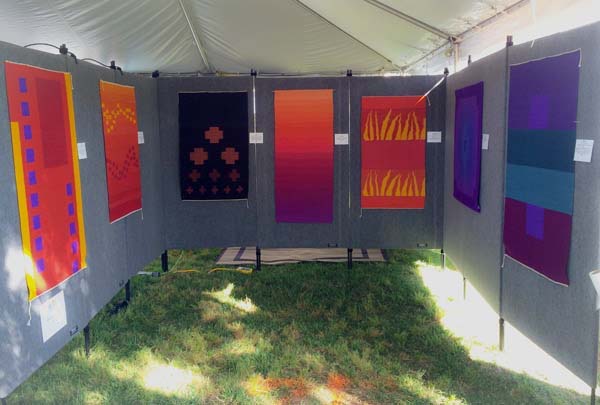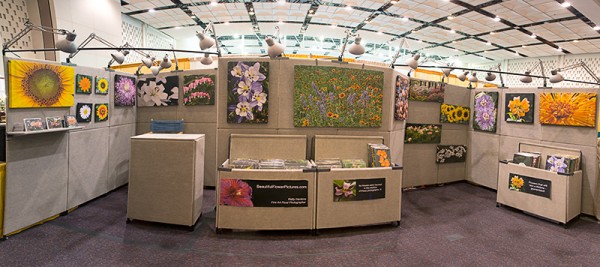
One of the sessions at the Arts Festival Conference in Portland, sponsored by ZAPP, was “Public Portfolio Critique.”
A mock jury of 6 people sat at the front of four screens in a large room. One at a time, artists’ slide presentations were projected as they might be in a slide jurying situation. The jurors offered valuable feedback for each set that was projected, and I took loads of notes.
Here’s what I learned. Most of these notes are from the jurors, but I’ve thrown in some of my own observations.

You have 20 seconds to impress the jury with your slides.
The festival organizers in the room had anywhere from 500 to over 2000 applicants for their events. They can’t spend more than 20 seconds on each set of slides.
The images are as important as what is in them.
Beware of hotspots and washed out images. When the photos are projected as a group, any inconsistencies are noticeable.
Image Details
Jurors are distracted by words. If all of your work has words in it, you’re probably okay. But rethink your submission if only one or two pieces have words.
Your signature should be blurred so that it’s not legible.
Don’t use patterned rugs or tablecloths in your booth or in the photos of your booth.
Most 3-D pieces are shot on a gray background. When slides are projected that have other colored backgrounds (such as white or black), the result was jarring for the jury. Stick with gray.
The background in all of your images should be the same.
Consistent image sizes are critical. Configure all of your images to take up the entire width or, if vertical, height of the slide. Mixing horizontal and vertical images looked less impressive.
If you make wearable art and use live models or mannequins, it’s best not to show the eyes.
Booth Shots
Include at least one of your individual works in the booth shot. This gives the jury a sense of scale. It also comforts them because they know that your booth will look like the staged photo.

You want the jury to look at the images of the individual works, then glance at the booth shot, and then return to the images.
If there is anything in the booth shot that is incongruent with the individual works, jurors begin to focus on the booth shot and try to make sense of what the artist is submitting.
Booth shots should show the entire booth.
You can’t just show one or two walls of your booth because this makes the jury wonder what’s on that third wall.
There’s a “Potters’ Problem,” which was described like this: Potters tend to want to put out everything. Their booths and booth shots need curating for impact.
Don’t enter an outdoor festival with an indoor booth shot.
You should have multiple booth shots for various situations. For example, don’t enter a booth shot with a browsing bin of prints if the festival doesn’t allow browsing bins. And don’t include painted scarves in your booth shot if you only submitted individual images of wall paintings.
The Slide Jury Bottom Line
Every time the jury is confused, the artist is rejected. They can’t take the chance.
The post How to Improve Your Slide Submissions for Juries appeared first on Art Biz Success.
















